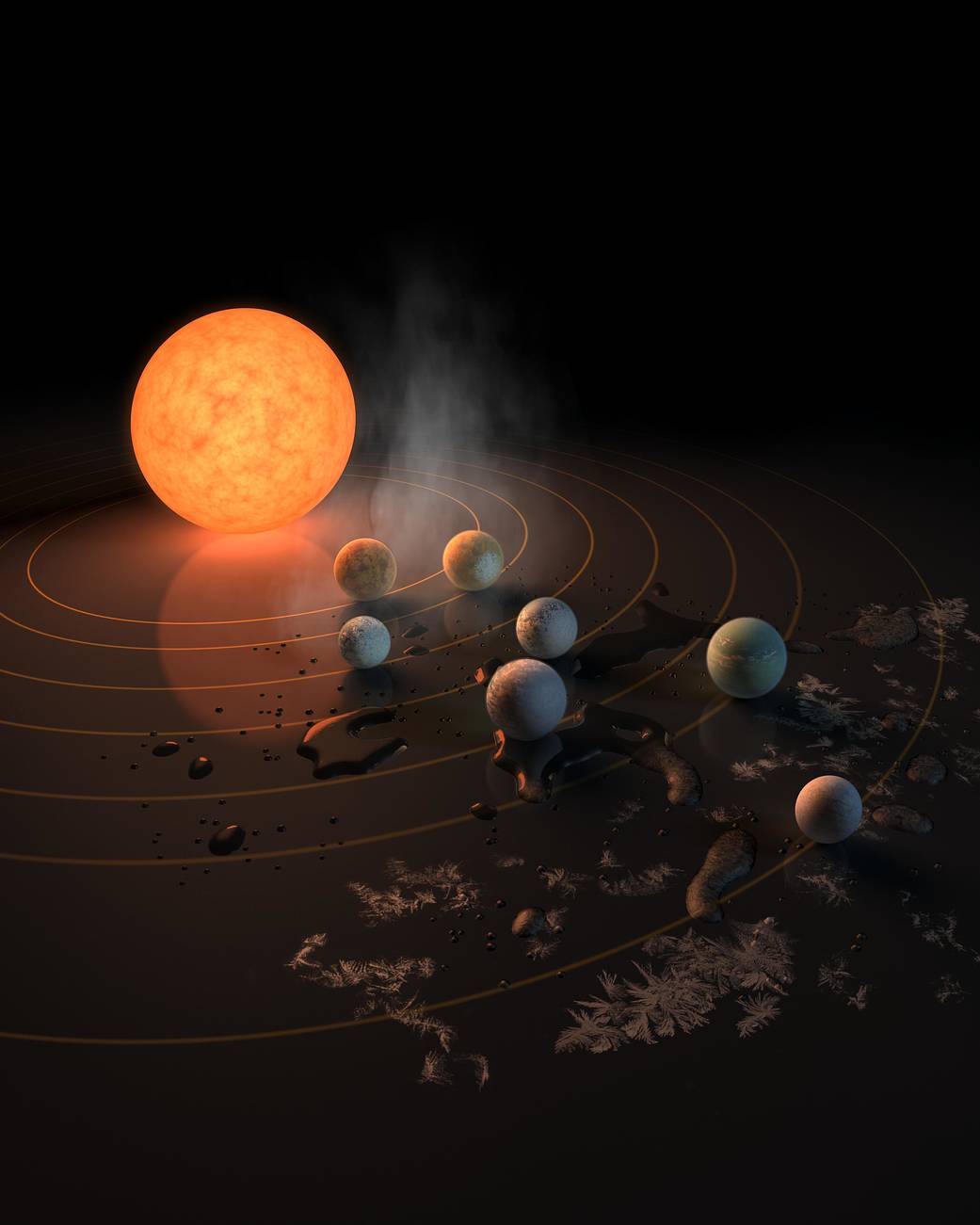As NASA pays tribute and says goodbye to the Spitzer Space Telescope, one of agency’s Great Observatories, one of Spitzer’s great discoveries was that of the TRAPPIST-1 star, an ultra-cool dwarf, which has seven Earth-size planets orbiting it. Spitzer, the ground-based TRAPPIST (TRAnsiting Planets and PlanetesImals Small Telescope) telescope, and other ground-based observatories jointly made the discovery that was announced in Feb. 2017. The system was named for the TRAPPIST telescope.
The discovery sets a new record for greatest number of habitable-zone planets found around a single star outside our solar system. All of these seven planets could have liquid water – key to life as we know it – under the right atmospheric conditions, but the chances are highest with the three in the habitable zone.
Image Credit: NASA/JPL-Caltech
在NASA向斯皮策太空望远镜告别之际,斯皮策最伟大的天文台之一——斯皮策太空望远镜发现了一颗名为TRAPPIST-1的超冷矮星,它有七颗地球大小的行星围绕着它运行。斯皮策地面上的特拉普斯特(凌日行星和星子小型望远镜)望远镜和其他地基天文台联合发现了这一现象,并于2017年2月宣布。该系统以特拉普斯特望远镜命名。
这一发现创下了太阳系外一颗恒星周围宜居带行星数量最多的新纪录。在合适的大气条件下,这七颗行星都可能有液态水——我们知道液态水是生命的关键,但在宜居带中这三个行星的机会最高。
影像来源:NASA/JPL-Caltech







